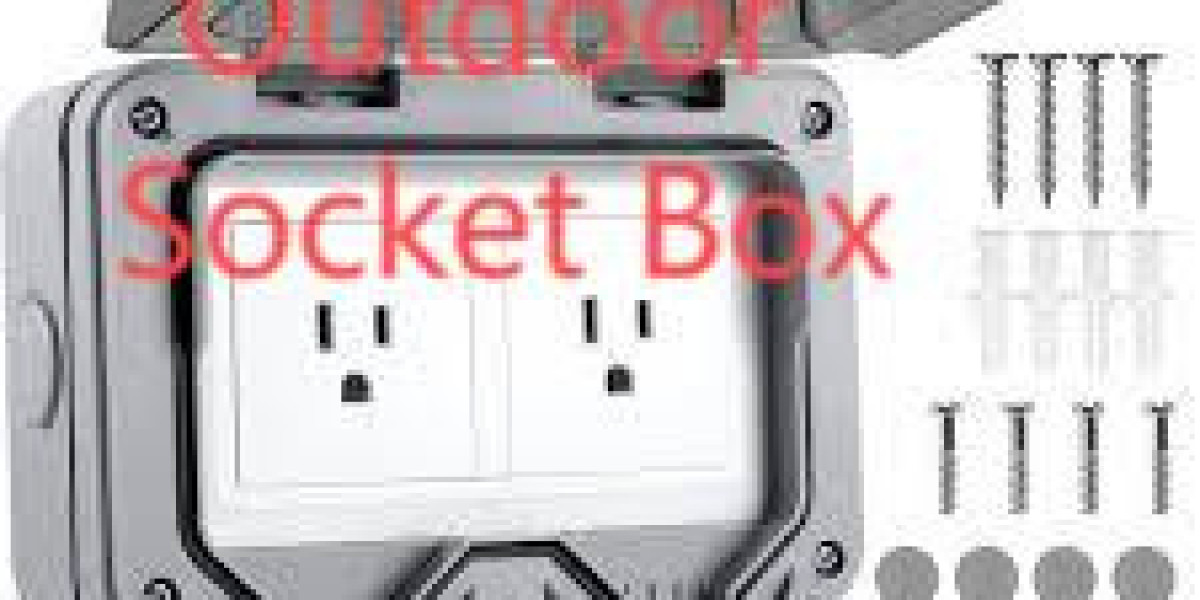Outdoor electrical outlets must balance usability with protection. Choosing an appropriate Outdoor Socket Box placed where it’s accessible yet shielded can make routine tasks safer and faster, and many installers find that locating a Outdoor Socket Box near the loads it serves reduces cable runs and limits exposure to damage. This short introduction explains why a purpose-built enclosure matters, what features to look for, and practical tips for installation and upkeep.
Why Purpose-Built Enclosures Improve Safety
Outdoor wiring exposed to rain, dust, and physical impact is a common cause of faults. A dedicated enclosure prevents water ingress, keeps connections away from curious hands or animals, and protects terminations from corrosion. When a box is properly sealed and mounted, it reduces the likelihood of short circuits and minimizes the risk of equipment failure during wet weather. In short, the right enclosure is both a protective barrier and a practical workpoint.
Features That Make a Good Socket Box
Look for units with secure covers, robust gasketing, and strain-relief for cable entries. Lockable lids prevent tampering, while clear internal space and labeled terminal strips speed troubleshooting. Impact-resistant materials and UV-stable finishes help the enclosure age gracefully in sunlight. Also important are mounting options that allow the box to be fixed to walls, posts, or poles without compromising seals or alignment — a stable installation is a reliable installation.
Placement and Installation Best Practices
Mount the box near the equipment it serves to keep cable lengths short and joints accessible. Position at a height that makes servicing simple — high enough to limit water splash, low enough for routine inspections without tools. Use appropriate conduit and fittings for incoming cables, and ensure the entry points remain sealed. Avoid locations where runoff, landscaping, or routine traffic could repeatedly strike or stress the enclosure.
Nante’s Rugged Configurations for Tough Sites
Some manufacturers offer models specifically designed for outdoor and industrial environments. These variants may include extra-thick walls, metal reinforcements, or specialized seals suited for coastal, agricultural, or high-dust sites. Choosing a configuration that matches site conditions reduces maintenance and prevents premature failures. If future expansion is likely, consider a box with additional capacity or modular mounting so upgrades are cleaner and faster.
Maintenance Habits That Protect Performance
Simple, periodic checks extend service life: verify gaskets remain pliable, remove debris from around the unit, and confirm that covers latch properly. Inspect cable entries for abrasion and check that labels remain legible. After major storms or construction work, re-check seals and fastenings. Keeping a short maintenance log helps spot trends — slow water ingress or repeated trips may indicate a need for relocation or an upgrade.
Practical Benefits for Homeowners and Site Managers
Localizing outdoor circuits to a dedicated box shortens repair times, reduces the need to access interior panels, and lets technicians isolate faults quickly. For multi-zone sites, grouping related loads into the same enclosure clarifies responsibility and improves workflow. Managers appreciate that a neat, protected installation lowers insurance risk and reduces the frequency of emergency call-outs.
Investing in an enclosure tailored to the environment and expected use pays off in fewer failures and easier upkeep. When planning an outdoor power point, think not only about immediate needs but also about long-term access, protection, and adaptability. For product options and site-appropriate solutions, visit www.nante.com/product/






